Understanding the Metaverse: A New Frontier for Virtual Booths
The Metaverse is an expansive online universe where individuals interact through digital avatars. It’s a collective virtual shared space, created by the convergence of virtually enhanced physical and digital reality. This realm is persistent, meaning it continues to exist and evolve even when you’re not logged in, offering experiences that blend reality with the digital. As technology advances, the Metaverse is rapidly transforming into a space where people can work, play, learn, and connect in ways that mirror the physical world but with fewer limitations.
Virtual Booths and the Metaverse Experience
Within the Metaverse, virtual booths have emerged as a compelling feature for businesses and creators alike. These booths function as individual spaces for brands to display products, engage with visitors, and conduct transactions entirely in the virtual domain. They are digital equivalents of exhibit spaces at trade shows but in an entirely immersive environment. Virtual booths in the Metaverse can replicate the sensory experiences of a physical venue, complete with visuals, sounds, and interactive elements that offer a rich user engagement, drastically increasing outreach and consumer interaction.
Advantages of Virtual Booths in the Metaverse
- Enhanced Accessibility: Virtual booths break geographical barriers, allowing access to a global audience without the need for physical travel.
- Cost-Effectiveness: They eliminate the high costs associated with renting space, travel, and constructing physical booths, making it an affordable marketing medium.
- Customization and Flexibility: These digital spaces can be easily modified and customized to fit brand identities and campaign themes.
- Immersive Engagement: Interactive elements and gamification within the booths can create memorable experiences for visitors, much more so than traditional online ads or web pages.
For businesses looking to innovate and captivate, the Metaverse provides a platform with virtually unlimited creative possibilities. The rise of virtual booths is a testament to how industries are adapting to the digital age. As we continue to explore these new frontiers, the potential for growth, networking, and consumer engagement within the Metaverse is bound to expand exponentially.
How to Create Engaging Virtual Booths in the Metaverse
How to Create Engaging Virtual Booths in the Metaverse
Understanding the Metaverse Ecosystem
Before diving into the creation of a virtual booth, it’s essential to comprehend the ecosystem of the Metaverse. This digital frontier is a collection of interconnected spaces where users can interact with each other and digital content in a virtual environment. Grasping the dynamics of the Metaverse allows for a seamless integration of innovative booths that can engage users and leave a lasting impression.
Choose the Right Platform
Not all Metaverse platforms are created equal. Do your research and select a platform that aligns with your target audience and the specific interactive experiences you wish to provide. Consider factors like user base, accessibility, and technical capabilities when committing to a platform for your virtual booth.
Designing for Interaction and Immersion
To ensure your virtual booth stands out, emphasize interaction and immersion. In the Metaverse, the key is to create experiences that are not just passive but actively engage the participant. This can be done by utilizing interactive elements such as quizzes, games, and real-time chat systems.
Incorporate Multimedia Elements
Make use of rich multimedia content to craft engaging exhibits within your booth. The integration of videos, 3D models, and music can transform a static booth into a dynamic and captivating space. By mixing various forms of media, you can cater to different preferences and enhance the user experience.
- Virtual Reality (VR) Integration: Offer virtual reality experiences for a more immersive interaction.
- Augmented Reality (AR) Features: AR can add an extra layer of engagement by blending virtual and real-world elements.
- Interactive Chatbots: Use AI-powered chatbots to provide real-time assistance and information to booth visitors.
Maximizing Audience Participation
One of the goals when setting up a virtual booth in the Metaverse is maximizing audience participation. This means creating an environment where users are not just observers but active participants. Gamification is a powerful tool for this, turning the booth experience into a game-like journey which can incentivize user engagement.
Utilize Gamification Strategies
Gamify your booth by adding elements like point scoring, competitions, and rewards. This can encourage visitors to spend more time at your booth and interact with your brand. Make sure the gamification aligns with your branding and serves a purpose beyond just entertainment.
- Leaderboards: Encourage competition and showcase user achievements.
- Challenges: Create tasks for visitors to complete, driving booth exploration.
- Rewards: Offer virtual or real-world incentives to motivate participation.
Tracking and Analytics for Continuous Improvement
Making your virtual booth engaging is an ongoing process. Implement tracking and analytics tools to gather data on how visitors interact with your booth. This information can pinpoint what’s working, what’s not, and where improvements can be made to further enhance the user experience for future events.
Leverage Data Insights
Analytic insights offer a window into visitor behaviors, preferences, and patterns. Harness this data to refine your booth’s design, functionalities, and content, ensuring that each iteration is better than the last and continues to captivate your intended audience.
- User Flow Analysis: Understand how visitors move within your booth and optimize the layout accordingly.
- Engagement Metrics: Measure how users interact with different elements to learn what captures their attention.
- Feedback Surveys: Direct feedback from users can provide qualitative insights, complementing the quantitative data.
The Benefits of Hosting Your Next Event in the Metaverse Virtual Booths
The Metaverse provides an innovative landscape where immersive experiences redefine how we connect and engage. When you opt to host your event within the virtual halls of the Metaverse, you unlock a suite of advantages that can’t be replicated by traditional venues. This switch to a digital platform ensures that your event is accessible, customizable, and memorable, all while tapping into cutting-edge technology that will captivate your attendees.
Boundless Access and Global Reach
One of the most significant advantages of hosting your event in the Metaverse is the elimination of geographical barriers. Traditional events limit attendance to those who can physically make it, but with a virtual booth, anyone with internet access can join from anywhere in the world. This means that:
- Your event can have a wider audience, significantly increasing networking opportunities and audience engagement.
- You can deliver content and experiences to a global audience without worrying about travel restrictions or costs.
- Participants from different time zones can access the content at their convenience, enhancing the user experience and maximizing attendance.
Enhanced Networking and Interaction
The Metaverse doesn’t just break down physical barriers, it also offers unparalleled networking capabilities through virtual booths. These interactive spaces are designed for spontaneous conversations and structured meetings alike, enabling:
- Real-time communication through chat and voice options, making networking as natural and engaging as in-person events.
- Virtual business card exchanges and downloadable resources, making the follow-up process smoother and more immediate.
- Customizable avatars for attendees to represent themselves, adding a personal touch that fosters a sense of community.
Customization and Brand Experience
A distinct advantage of the Metaverse is the ability to create a brand-specific environment for your event. Unlike physical venues, you’re not limited by the constraints of the physical world, allowing you to:
- Design and animate your virtual booth to mirror your brand’s identity, creating a consistent and immersive visual experience.
- Use interactive features, such as games or simulations, to engage visitors in a unique and memorable way.
- Adapt the space as needed, making last-minute changes possible without the usual logistical headaches.
Shifting your event into the Metaverse allows you to harness the full potential of virtual reality, not just for novelty’s sake but to deliver results that matter. With creative freedom, extended reach, and enhanced connection opportunities available at your virtual fingertips, your next event could set a new benchmark for success in an increasingly digital world.
Exploring the Best Practices for Exhibitors in the Metaverse
Understanding the Metaverse Environment
The Metaverse represents an exciting and burgeoning realm where the digital and physical worlds converge. Exhibitors looking to make a splash in this space must first gain a solid understanding of its unique environment. The Metaverse is a collection of interlinked virtual spaces, commonly experienced through virtual reality (VR) or augmented reality (AR) platforms. To truly connect with attendees, exhibitors should immerse themselves in these platforms, learn the user interface and navigation, and understand the culture and expectations of metaversal communities.
Identify the Popular Platforms
Begin by identifying which platforms are most popular among your target audience, be it VRChat, Second Life, or newer contenders. Each of these platforms has distinct audiences and features. Some may offer robust customization options allowing for unique brand experiences, while others might focus on social interactions.
Engage with Existing Communities
It’s paramount for exhibitors to engage with existing communities within these platforms. Knowing how users interact, what captivates them, and the type of content they consume will provide invaluable insights into how to craft your exhibit. Cultural nuances in the Metaverse can be pronounced, and fitting in with the right tone and approach is crucial for success.
Designing Your Virtual Exhibit
Designing a virtual exhibit in the Metaverse requires creativity and a firm grasp of digital tools. The goal is to create an interactive space that is as engaging as it is informative. Attention to visual design and navigability is a must. The use of 3D models and virtual environments should be intuitive and contribute to the narrative you wish to tell. Consider the scale and space; unlike physical venues, the Metaverse is not bound by real-world limitations. However, overwhelming visitors with too vast a space can be just as counterproductive as a cramped one.
Create Immersive Experiences
Leverage the technology available to create immersive experiences which can range from interactive product demos to virtual reality seminars. Employing elements such as virtual trials or interactive walkthroughs can dramatically increase engagement and retain visitor interest. These features can be a game-changer in terms of making a memorable impression within the digital landscape.
Use of Branding Elements
Strategically placing branding elements within the exhibit helps in reinforcing brand recall. Use logos, color schemes, and messaging consistently throughout the virtual space to create a cohesive brand experience. Remember, subtlety often works best; avoid overpowering your exhibit with branding to the point that it detracts from the visitor experience.
Engagement and Interaction Strategies
Interaction is key in the Metaverse. Exhibitors should establish strategies that foster engagement with attendees. Live chat functions, Q&A sessions, and real-time events pull in visitors and create opportunities for meaningful connections. Facilitating these interactions often requires trained personnel who are adept at communicating in the Metaverse’s unique setting. Encourage visitors to participate in activities, offer feedback, and share their experiences on social media to extend the reach of the exhibit.
Implement Gamification Techniques
Gamification can add an element of fun and competition, driving interaction and engagement. Consider incorporating contests, scavenger hunts, or reward systems to incentivize visitors to explore different aspects of your exhibit, thereby increasing their dwell time and engagement levels.
Tracking Metrics for Improvement
Just as in any marketing endeavor, tracking metrics such as visitor count, dwell time, and interaction rate is vital. In the Metaverse, these data points can often be gathered with greater precision than in the physical world. Using analytics tools tailored for virtual environments allows exhibitors to gain insights into their exhibit’s performance and areas where they can improve upon for future events.
Maintaining an Effective Presence Post-Event
The job of an exhibitor in the Metaverse doesn’t end with the event. To establish a lasting presence, continuous interaction and updates are necessary. Keep your virtual space active with ongoing events, content updates, and by nurturing the community that has built around your exhibit. Consider using the virtual space for various purposes throughout the year, such as product launches or educational workshops, to keep the audience engaged and bring in a steady flow of virtual traffic.
Creating a Community
Building a community around your brand in the Metaverse might be your strongest post-event strategy. Enable forums or social channels connected to your exhibit where users can converse and share ideas. This creates an ecosystem that thrives on user-generated content, ensuring your exhibit remains vibrant and talked-about.
Long-term Content Strategy
Together with community building, develop a long-term content strategy. This comprises scheduled updates, patch notes, and sneak peeks into future experiences. Consistently delivering fresh and exclusive content can make your exhibit a staple destination within the Metaverse environment.
Future Trends: The Evolution of Trade Shows and Exhibitions in the Metaverse
Introducing the Metaverse: A New Horizon for Trade Shows
The trade show and exhibition industry is poised for a dynamic transformation as it embraces the metaverse, a term that has taken the tech world by storm. What used to be physical spaces filled with booths and product demos is evolving into a virtual experience without geographical boundaries. The metaverse offers a 3D virtual space where exhibitors and attendees can interact with each other, exchange information, and experience products and services in ways previously limited by physical constraints.
Why the Metaverse is a Game-Changer for Exhibitors
The allure of the metaverse for exhibitors lies in its unparalleled ability to create immersive brand experiences. By leveraging virtual reality (VR) and augmented reality (AR), exhibitors can craft interactive environments that not only showcase their products but also tell compelling brand stories. This significantly enhances engagement and could drive higher sales conversions compared to traditional exhibition methods.
Accessibility and Cost-Effectiveness
Trade shows in the metaverse eliminate the need for physical travel, making them more accessible to a global audience. Additionally, virtual exhibitions can be more cost-effective for both organizers and participants. Without the expenses associated with venue rental, booth setup, and travel, companies have the potential to allocate more resources towards creative presentation and marketing.
Technological Advancements Driving Metaverse Exhibitions
Several key technological advancements are fueling the rise of trade shows in the metaverse. First and foremost is the widespread adoption of VR and AR technologies that allow users to interact with digital environments in real-time. These technologies create an engaging user experience that emulates the physical world of trade shows but with added layers of interactivity and detail.
The Role of 5G and Cloud Computing
Another critical factor is the emergence of 5G networks and cloud computing, which have drastically reduced latency and improved the speed and reliability of online interactions. This development ensures that the virtual experiences in the metaverse are seamless and accessible from anywhere in the world, making digital trade shows more realistic and responsive.
Blockchain and NFTs in the Metaverse
The integration of blockchain technology and non-fungible tokens (NFTs) within the metaverse enables secure transactions and unique digital asset ownership. This opens up new opportunities for exhibitors to sell exclusive digital content or merchandise, track ownership, and prevent counterfeiting—enhancing the value proposition of virtual trade shows.
Captivating a New Generation of Attendees with Interactive Experiences
Trade shows and exhibitions in the metaverse are not just about replicating the physical world; they’re about augmenting it to captivate a new generation of attendees. Younger demographics, already familiar with virtual environments and gaming platforms, are likely to find these new formats more engaging and pertinent. The key to success in the metaverse will be in delivering fresh, memorable experiences that leverage the possibilities of virtual interaction—from demonstrations that allow real-time customization to networking events that mirror in-person social dynamics.
Personalization at Scale
One of the most significant trends is the capacity for personalization at scale within the metaverse. Exhibitors can provide tailored content and recommendations to attendees based on their interests and behaviors, much like algorithms suggest products online. This not only enhances the user experience but also increases the chances of connecting the right products with the right buyers.
Creating Community Beyond the Event
Beyond a single event, the metaverse enables a continuous community experience. Attendees can form connections, access content, and have discussions long after the event concludes. This enduring engagement helps to build a community around a brand or industry and creates opportunities for year-round participation and value delivery.
In conclusion, as trade shows and exhibitions migrate into the metaverse, we anticipate groundbreaking opportunities for connection, immersion, and innovation. As these trends gain momentum, the industry will witness a significant shift in how people meet, learn, and do business, marking a new era for global trade and networking.



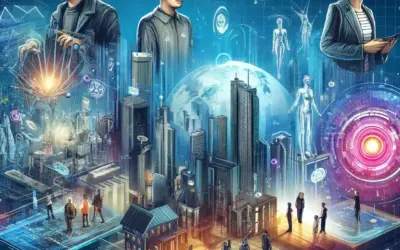
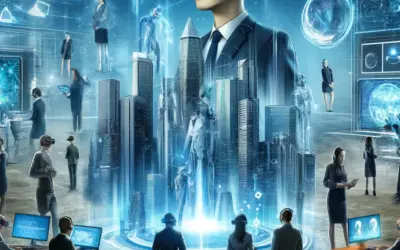
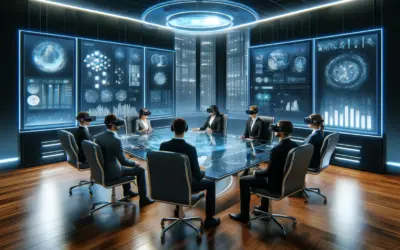
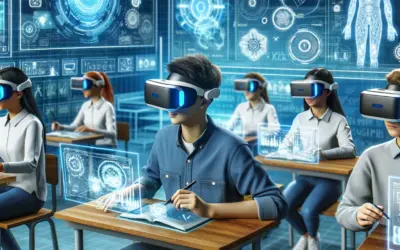
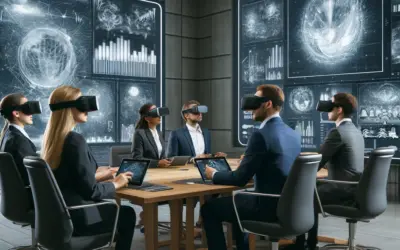
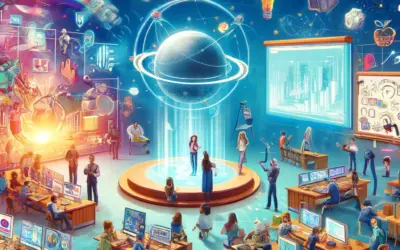
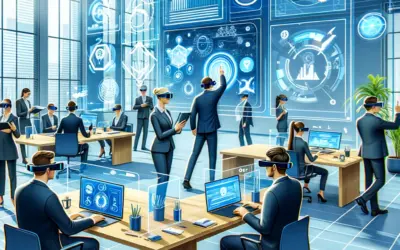
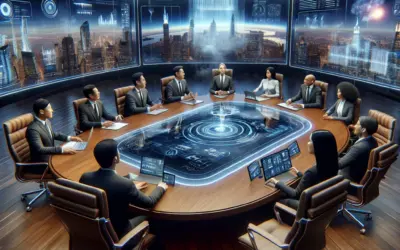
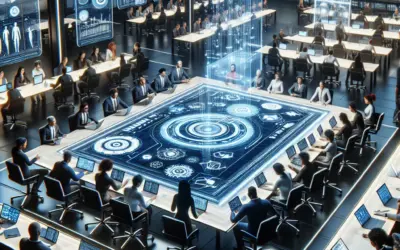
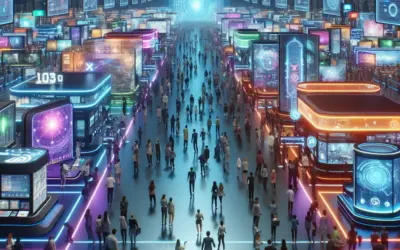
0 comentarios